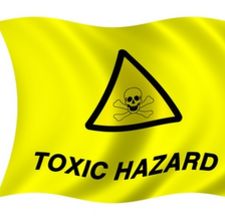 Eight substances were added to the 12th Report on Carcinogens, a science-based document that identifies chemicals and biological agents that may put people at increased risk for cancer. The Report is maintained by the U.S. Dept. of Health and Human Services and data compiled by the National Toxicology Program (NTP).
Eight substances were added to the 12th Report on Carcinogens, a science-based document that identifies chemicals and biological agents that may put people at increased risk for cancer. The Report is maintained by the U.S. Dept. of Health and Human Services and data compiled by the National Toxicology Program (NTP).
The industrial chemical formaldehyde and a botanical known as aristolochic acids are now listed as known human carcinogens. Six other substances — captafol, cobalt-tungsten carbide (in powder or hard metal form), certain inhalable glass wool fibers, o-nitrotoluene, riddelliine, and styrene — are added as substances that are reasonably anticipated to be human carcinogens. With these additions, the 12th Report on Carcinogens now includes 240 listings.
The Report on Carcinogens is a congressionally mandated document that is prepared for the HHS Secretary by the NTP. The report identifies agents, substances, mixtures, or exposures in two categories: known to be a human carcinogen and reasonably anticipated to be a human carcinogen. A listing in the Report on Carcinogens does not by itself mean that a substance will cause cancer. Many factors, including the amount and duration of exposure, and an individual’s susceptibility to a substance, affect whether a person will develop cancer.
Once a substance is nominated by the public or private sector and selected for consideration, it undergoes an extensive evaluation with numerous opportunities for scientific and public input. There were at least six opportunities for public input on each substance. The NTP used established criteria to evaluate the scientific evidence on each candidate substance under review. The NTP drew upon the scientific expertise of several federal agencies, including the National Institutes of Health, Centers for Disease Control and Prevention, Agency for Toxic Substances and Disease Registry, U.S. Food and Drug Administration, U.S. Environmental Protection Agency, U.S. Consumer Product Safety Commission, and Occupational Safety and Health Administration.
Two known human carcinogens:
Aristolochic acids have been shown to cause high rates of bladder or upper urinary tract cancer among individuals with kidney or renal disease who consumed botanical products containing aristolochic acids. Aristolochic acids are a family of acids that occur naturally in some plant species. Despite a warning issued in 2001 by the U.S. Food and Drug Administration that advised consumers to discontinue use of any botanical products containing aristolochic acids, they can still be purchased on the Internet and abroad, and may be found as a contaminant in herbal products used to treat a variety of symptoms and diseases, such as arthritis, gout, and inflammation.
Formaldehyde was first listed in the 2nd Report on Carcinogens as a substance that was reasonably anticipated to be a human carcinogen, after laboratory studies showed it caused nasal cancer in rats. There is now sufficient evidence from studies in humans to show that individuals with higher measures of exposure to formaldehyde are at increased risk for certain types of rare cancers, including nasopharyngeal (the nasopharnyx is the upper part of the throat behind the nose), sinonasal, as well as a specific cancer of the white blood cells known as myeloid leukemia. Formaldehyde is a colorless, flammable, strong-smelling chemical that is widely used to make resins for household items, such as composite wood products, paper product coatings, plastics, synthetic fibers, and textile finishes. Formaldehyde is also commonly used as a preservative in medical laboratories, mortuaries, and some consumer products, including some hair straightening products.
For more information on the six substances reasonably anticipated to be human carcinogens, CLICK HERE to read the full press release.

 This is Poison Awareness Week and the Institute for Women's Health Research sponsored a forum featuring Dr. Carol DesLauriers a pharmacist from the Illinois Poison Center, the nation's oldest poison center. Did you know that nearly 75% of poisoning deaths in the U.S. are due to unintentional poisoning? Unintentional poisoning includes the use of drugs or chemicals for recreational purposes in excessive amounts (an 'overdose'). It also includes the excessive use of drugs or chemicals for non-recreational purposes, such as by a toddler. Unintentional poisoning was second only to motor vehicle crashes as a cause of unintentional injury death for all ages in 2007. Among people 35-54 years old, unintentional poisoning caused more deaths than motors vehicle crashes.
This is Poison Awareness Week and the Institute for Women's Health Research sponsored a forum featuring Dr. Carol DesLauriers a pharmacist from the Illinois Poison Center, the nation's oldest poison center. Did you know that nearly 75% of poisoning deaths in the U.S. are due to unintentional poisoning? Unintentional poisoning includes the use of drugs or chemicals for recreational purposes in excessive amounts (an 'overdose'). It also includes the excessive use of drugs or chemicals for non-recreational purposes, such as by a toddler. Unintentional poisoning was second only to motor vehicle crashes as a cause of unintentional injury death for all ages in 2007. Among people 35-54 years old, unintentional poisoning caused more deaths than motors vehicle crashes.